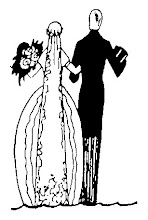Viewpoint by T. M. Moore “Praise the LORD! Praise the LORD, O my soul! I will praise the LORD as long as I live; I will sing praises to my God while I have my being.” God, we know, loves poetry. That’s one reason He included so much of it in the Bible, which He has given to equip us for every good work (2 Tim. 3:15-17). God knows that poetry has power to communicate truth in ways that narrative simply cannot achieve.Sometimes, even, God’s poetry imparts meaning quite apart from the words He gave the writers of Scripture. We see this in Hebrew poetry, in the use of parallelism to emphasize and underscore the verbal message. Good poetry can do this as well. In John Milton’s wonderful Christmas poem, “Ode on the Morning of Christ’s Nativity,” he uses structural devices as a kind of “picture frame” for his poem, or, if you will, like the walking bass undertone of a baroque concerto. The poem is divided into two parts, a prelude of four stanzas, in which Milton declares his intention of offering a gift of verse to Christ on the day of His nativity, and the song itself, which runs for twenty-seven stanzas. Milton arranges the lines and stanzas in a way that invites us to think in terms of Biblical numerology, to heighten his song of celebration for Christ’s coming to earth. For example, the prelude, in four stanzas, provides a structural summary of Milton’s message: God has come to earth for its redemption. The four stanzas follow the Biblical form for the number of earth – four: four winds, four directions, etc. Here is the first stanza: This is the month, and this the happy morn Look at the use of number: Lines 1-6 contain five beats, the normal line structure for 17th century verse (called iambic pentameter). Notice also that the stanza consists of seven lines, a Biblical number for perfection, because it combines the number for God, three, and for creation, four. But the last line ends in what is called an Alexandrine foot – an additional, sixth, beat. Six is the number of man (think: 666). There are also three different rhyming sounds ending the seven lines. Everything in this structure is thus arranged to say that on Christmas God came to earth for the blessing of men. In the song itself, Milton dramatically changes the stanza structure, and in a way that is unlike anything he’d ever done or had been seen in English poetry to his day. The structure is new and it jolts us – rather like the coming of Christ and His Kingdom. Here is the first stanza of the song: It was the winter wild, It takes a bit of “second sight” on the part of readers to spy out the ways poetic structure can reinforce the message of a good poem. And while not all poets are as careful and astute as Milton, where they use the structure to impart meaning without words, their verses, and our enjoyment of them, are greatly enhanced. Download the series, "Poetry and Second Sight." Click here:
Psalm 146:1,2
Wherein the son of heaven’s eternal king,
Of wedded maid, and virgin mother born,
Our great redemption from above did bring;
For so the holy sages once did sing,
That he our deadly forfeit should release,
And with his father work us a perpetual peace.
While the heaven-born child
All meanly wrapped in the rude manger lies;
Nature in awe to him
Had doffed here gaudy trim,
With her great master so to sympathize:
It was no season then for her
To wanton with the sun her lusty paramour.
Lines 1 and 2, and 4 and 5 have three beats – most unusual – while lines 4 and 6 have five – again, normalcy, what we’re used to day by day. The last two lines – of four and six beats – combine for the number ten, another number of perfection, while four different rhyme sounds remind us of God’s purpose to bless the earth. The repeated lines of three, each ending in a line of five, seem to picture the Deity descending into our everyday circumstances, while the last two lines suggest the result – something new and perfect. Poetry and Second Sight.
Poetry and Second Sight.
2 years ago



1 comments:
Thanks for sharing this! Love ya - B.
Post a Comment